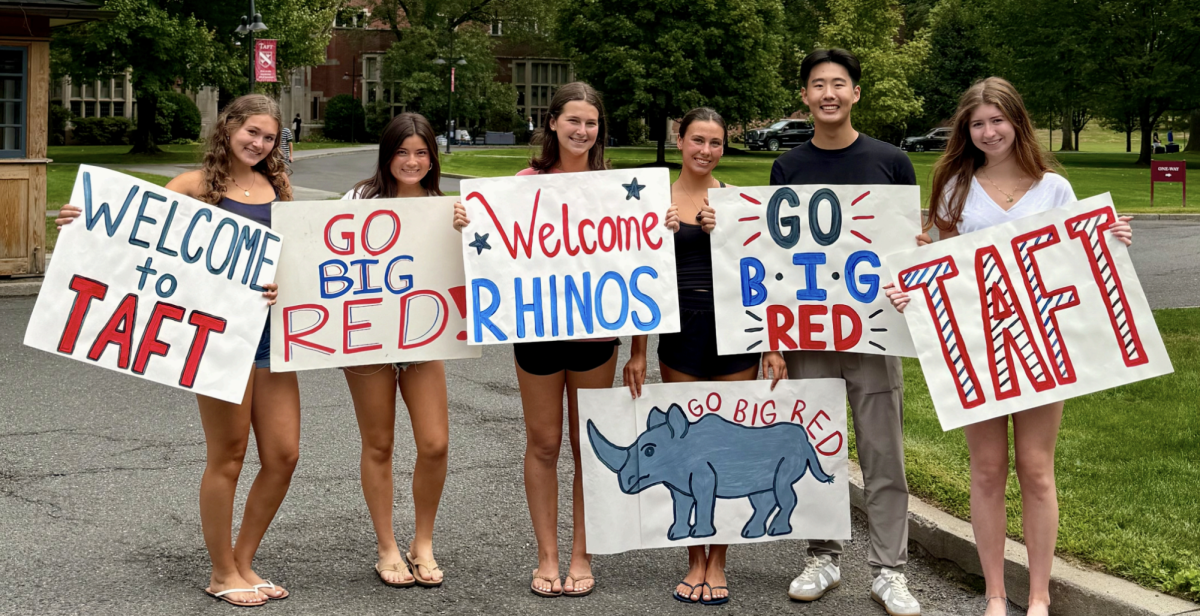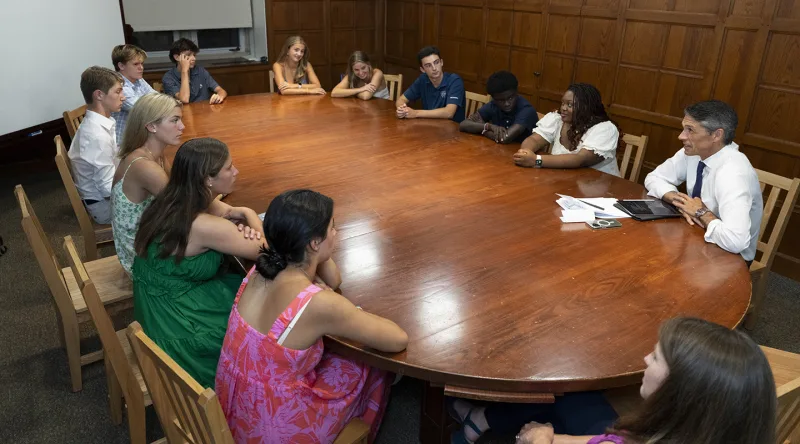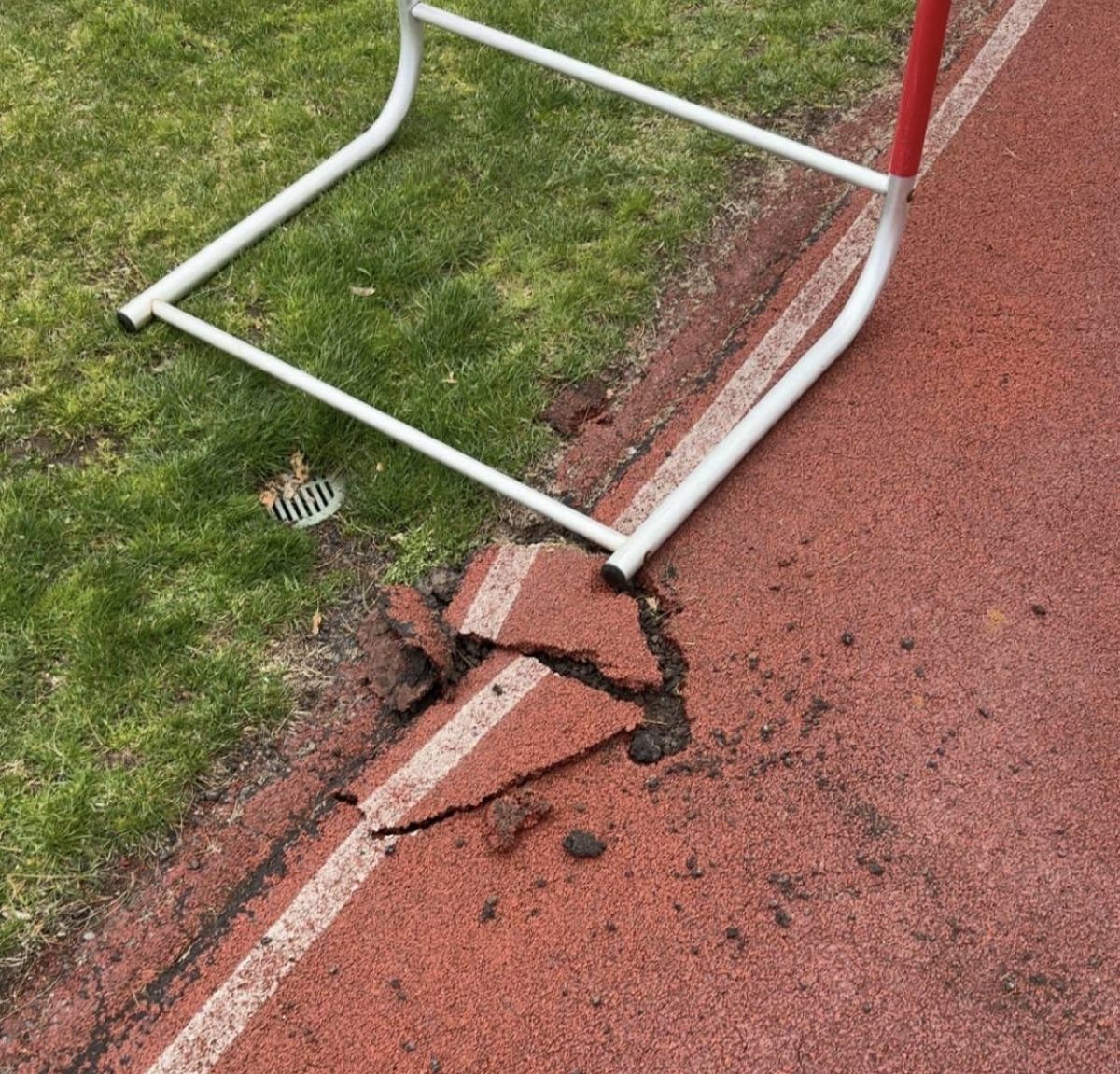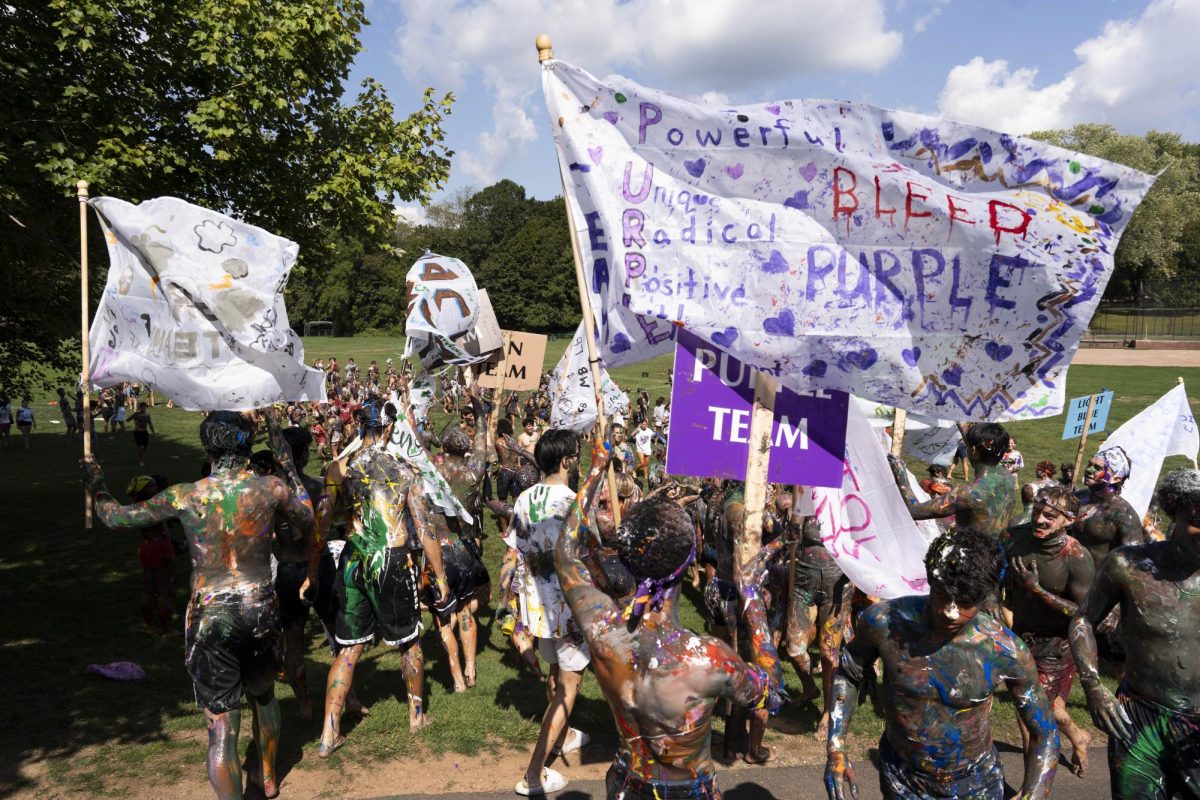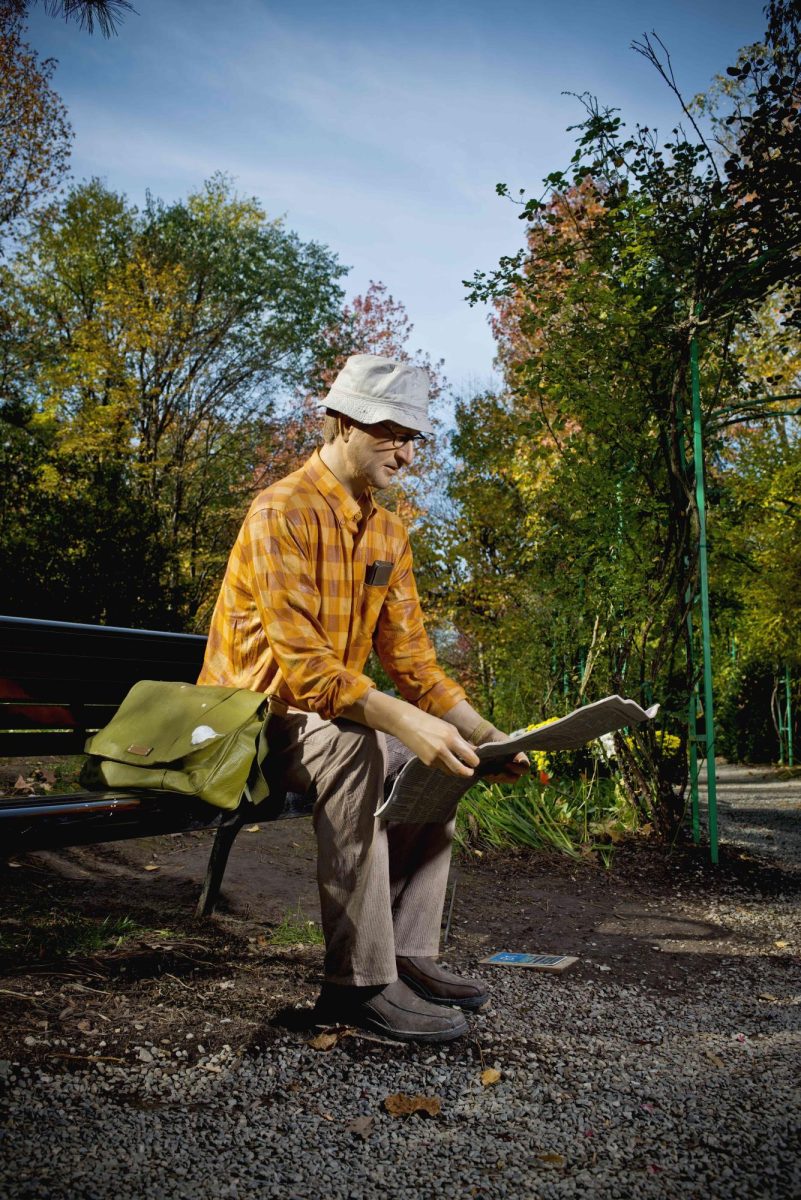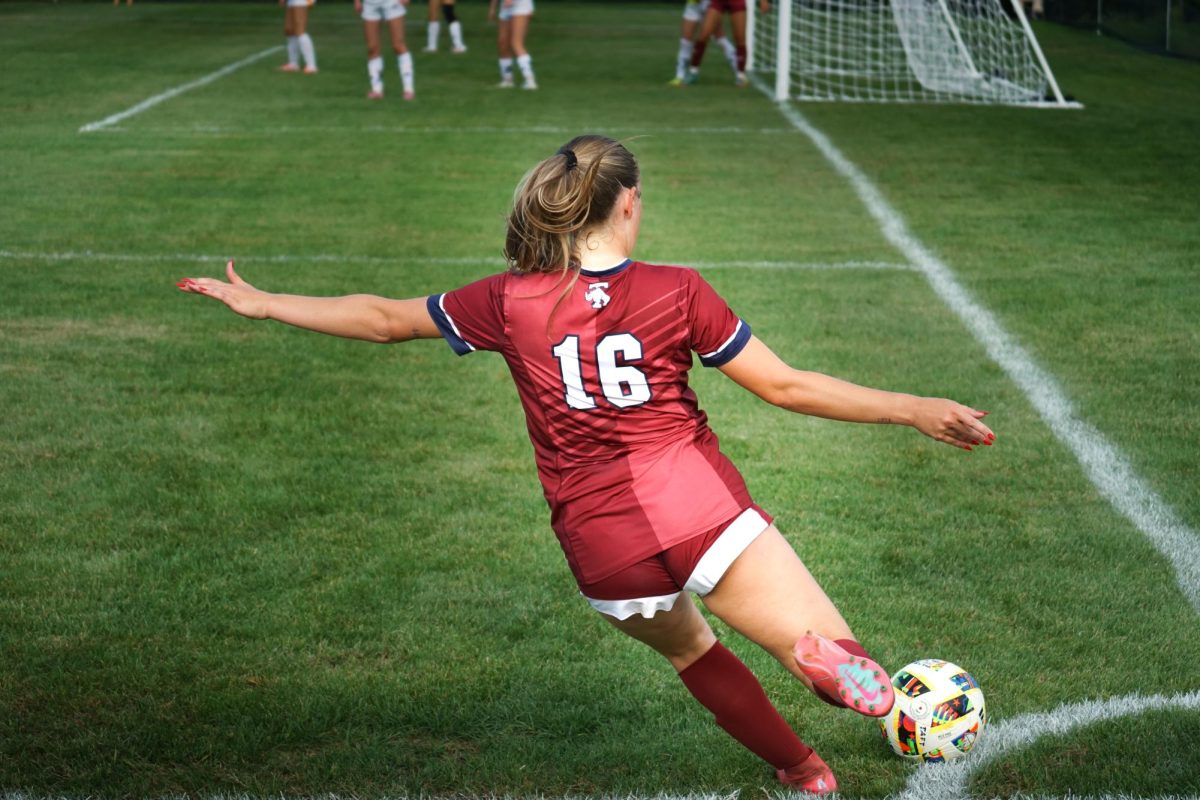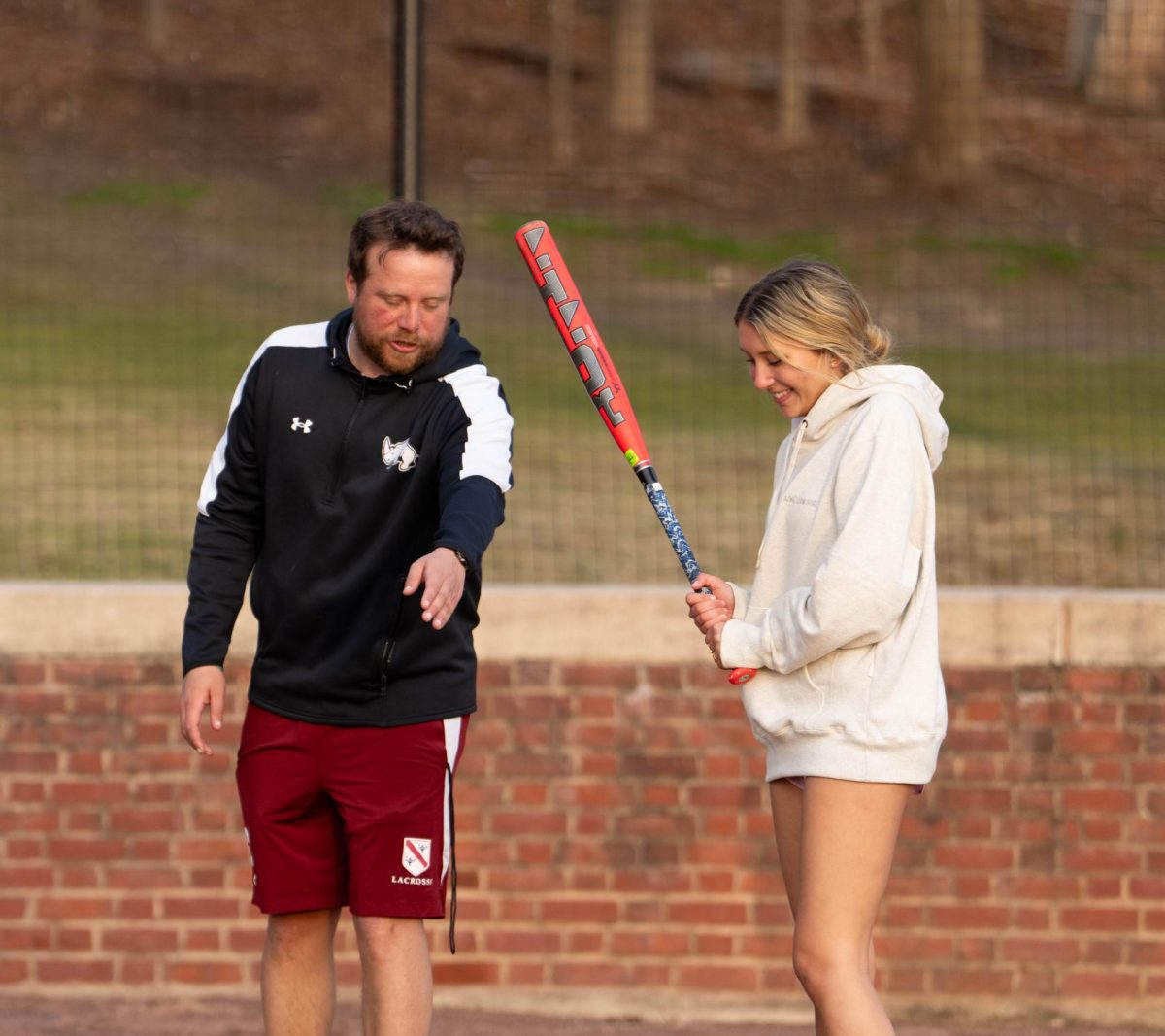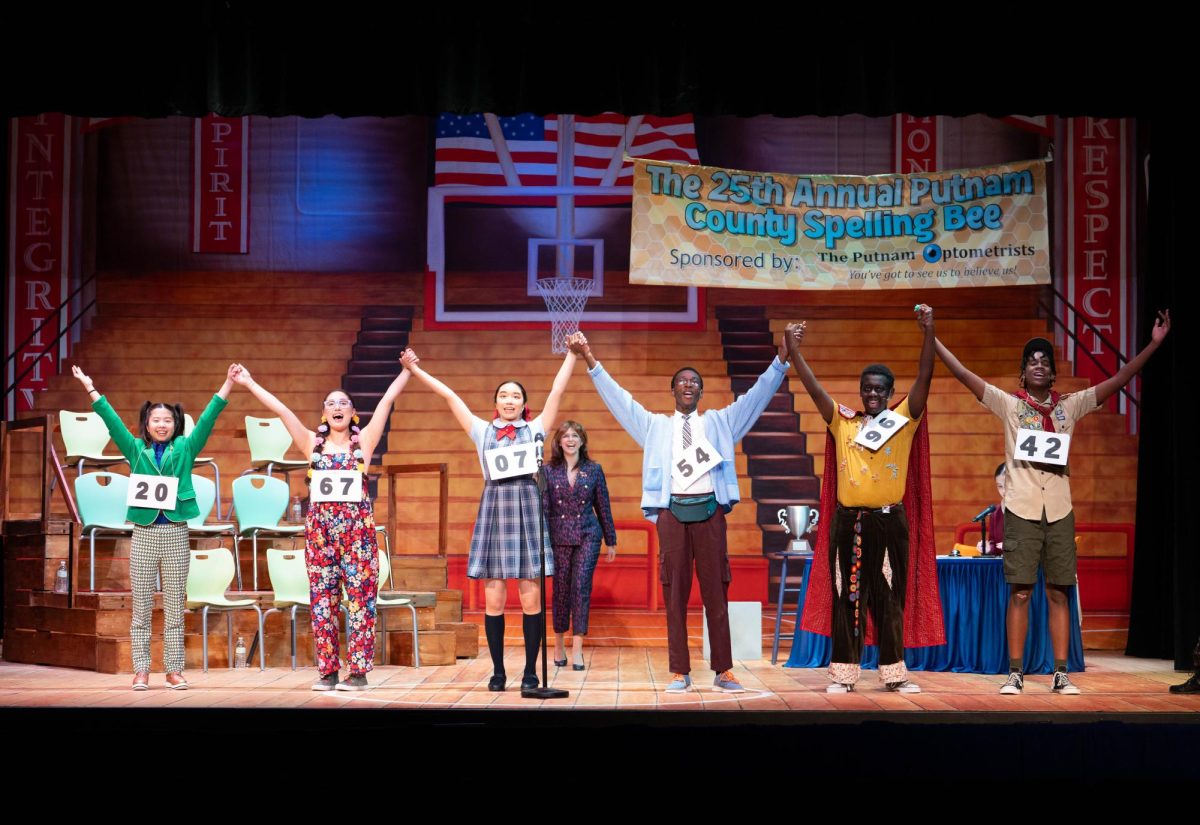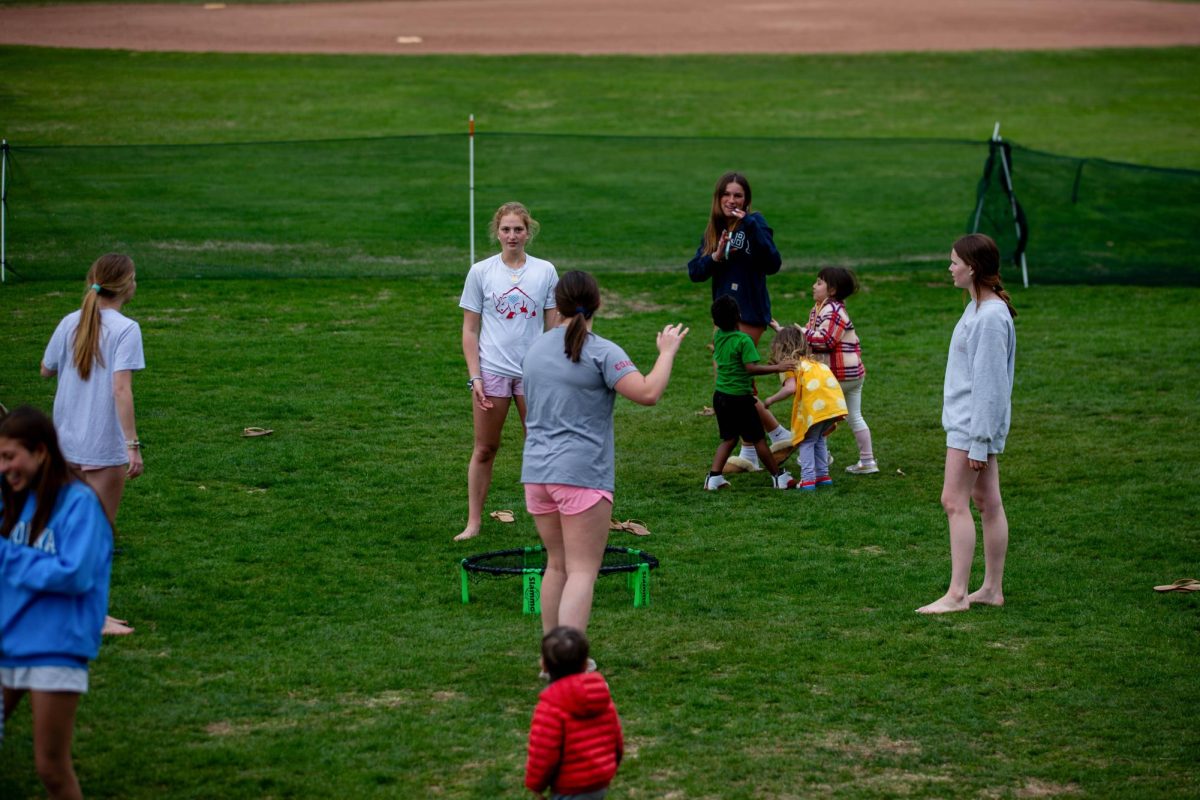Both new and returning students are most likely aware of the exciting development occurring around the football field. While the football team found this advancement cumbersome for many reasons, they have seen the struggles our cross country and track teams have endured as a result of the dilapidated state of the track, and they are excited to see the track team put it to good use. However, that excitement could be attributed more to the fact that they have an operational game field again.
For our track team, the old track was a subject of much head-shaking and bitter laughter. As a freshman, I was so excited to have a Varsity letter that my first couple of meets were filled with excitement and only excitement. However, as the season went on, a little bit of uncertainty crept in with all of my track enthusiasm. I was confused because whenever we had away meets, our team would run better: there were no mix-ups due to faded lines, and there was no grass or cracks to avoid. When we hosted meets, there was always a sense of embarrassment as teams passed the beautiful turf on their journey up to our dilapidated track. The contrast of Taft’s other athletic facilities and the crumbling track was clear.
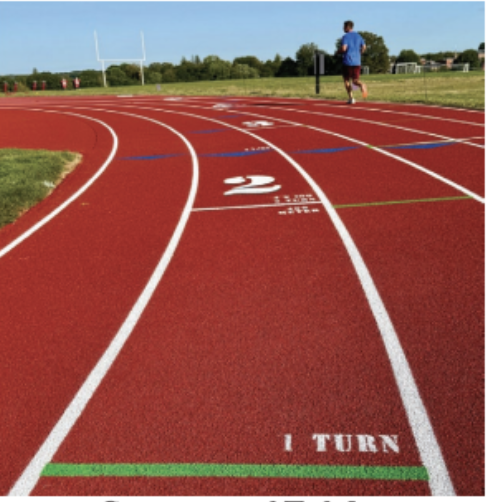 Last year, you may remember Tate Celebi’s entreaty (in this very publication) to the administration for action to be taken. That article highlighted some of the worst aspects of running on the track, including a condemnatory photo of lane one with a big chunk of track missing. (This caused some events to be moved because it was not possible to run in a lane that had an approximately one-foot hole.) I can admit that, as a team, we were a tad impatient in not considering the intense work that goes into building a new track. In talking to Mr. Odden about it, I realized that creating a new facility is not a quick process. The Advancement Office works with the budget, configuring what funds go where, and once donors for the track were found, there came the arduous task of completing a whole new track in a very tight time limit.
Last year, you may remember Tate Celebi’s entreaty (in this very publication) to the administration for action to be taken. That article highlighted some of the worst aspects of running on the track, including a condemnatory photo of lane one with a big chunk of track missing. (This caused some events to be moved because it was not possible to run in a lane that had an approximately one-foot hole.) I can admit that, as a team, we were a tad impatient in not considering the intense work that goes into building a new track. In talking to Mr. Odden about it, I realized that creating a new facility is not a quick process. The Advancement Office works with the budget, configuring what funds go where, and once donors for the track were found, there came the arduous task of completing a whole new track in a very tight time limit.
Runners like Tate and Charlotte Murphy, both of whom are continuing their athletic careers collegiately at Wesleyan and Brown, trained on a broken-down track for all four years. However, some of us are fortunate to be able to run the remainder of our time at Taft on the beautiful new track, including our captains, Sarah Rochester, Natalie Kaplan, Meredith Hui, Michael Werblow, and Gavin Poon, many of whom placed in the Founders League Championships and New England’s last spring.
On Thursday, I went up to the track to take a look for myself, and I couldn’t help but run some laps. You don’t have to be a runner to understand the difference between a good track and a bad one. Running on our old track was difficult, lacking both spring and bounce; lifting your legs took much more effort than it should have. The stiffness of the track was also notorious for causing chronic shin splints. Looking at the new track in all of its glory–the fresh color which can only be described as a hopeful red, the clean lines, the vitality of the actual material–I felt excited to adopt this track as our own, not ashamed. It made me smile that generations of Taft students to come will be able to jog, race, and cheer on their friends and teammates on that same track. For me, seeing our new track reminded me to find appreciation for what I have and to stay thankful. Four hundred meters of polyurethane and rubber have never made anyone so happy.

